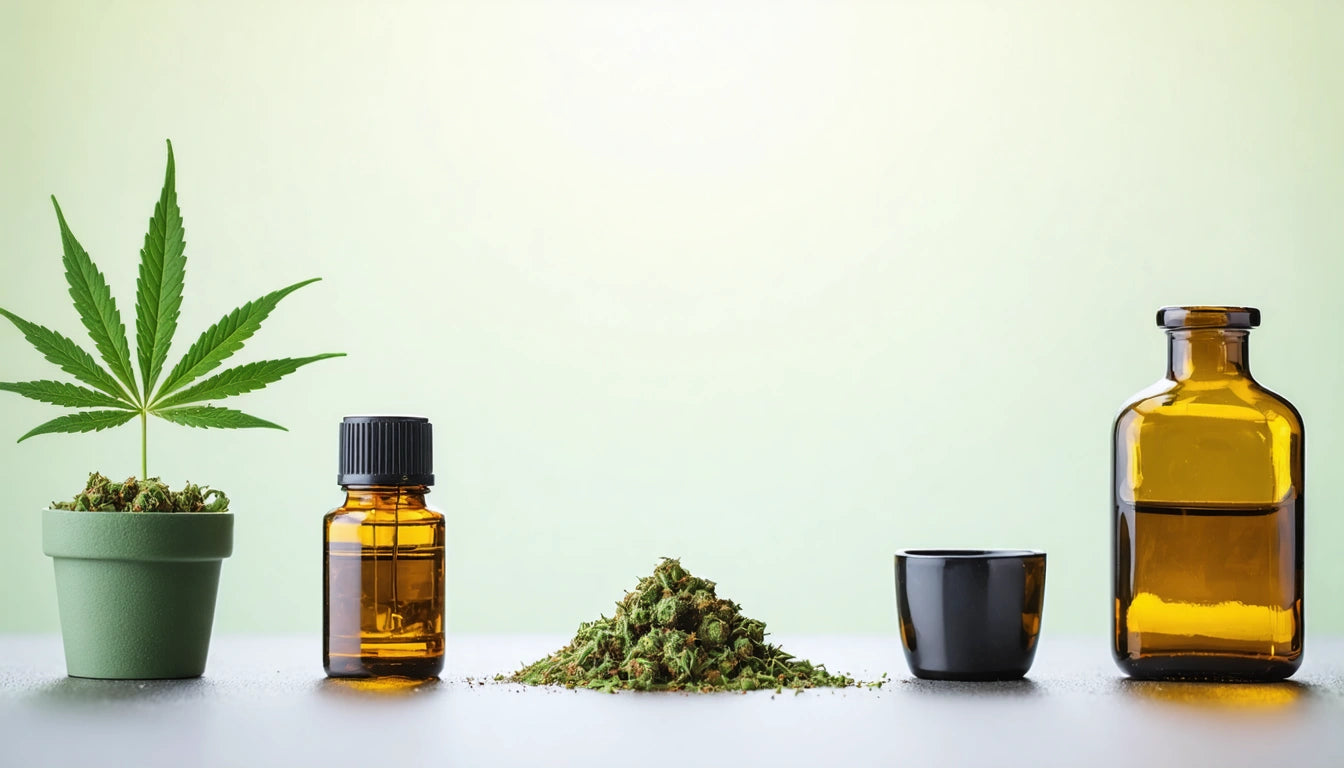Table of Contents
Delta-8 & Delta-9: What's the Difference from a Packaging Standpoint?
The cannabis industry continues to evolve with various cannabinoids gaining market share, particularly Delta-8 and Delta-9 THC. While chemically similar, these compounds face distinctly different regulatory landscapes that directly impact their packaging requirements. Understanding these differences is crucial for brands seeking compliance while maintaining competitive market positioning.
Legal Compliance Differences Between Delta-8 and Delta-9 Packaging
The fundamental packaging distinction between Delta-8 and Delta-9 products stems from their legal status. Delta-9 THC is federally regulated as a Schedule I controlled substance when derived from marijuana, while hemp-derived Delta-8 exists in a regulatory gray area following the 2018 Farm Bill.
According to state-by-state packaging regulations, Delta-9 products typically face stricter requirements in legal cannabis states. These regulations often include specific warning language, THC symbols, and opaque packaging mandates. Delta-8 regulations vary significantly by state, with some banning the compound entirely while others apply CBD-like standards.
Labeling Requirements: Delta-8 vs Delta-9
Delta-9 Labeling Standards
Delta-9 products in regulated markets must adhere to comprehensive labeling requirements including:
- Universal THC warning symbols
- Precise cannabinoid content percentages
- Batch and lot numbers for tracking
- State-specific warning language
- Harvest and manufacturing dates
As outlined in this compliance breakdown, Delta-9 labels must also include laboratory testing information and proper serving size indicators to prevent overconsumption.
Delta-8 Labeling Considerations
Delta-8 labeling requirements are less standardized but increasingly include:
- Clear identification as Delta-8 THC
- Distinction from CBD and Delta-9 products
- Serving size recommendations
- Total milligram content per package
- Age restriction notices (21+)
Many Delta-8 brands are proactively adopting stricter labeling standards to build consumer trust and prepare for potential regulatory changes, as discussed in future Delta-8 packaging trends.
Child-Resistant Packaging Considerations
Both Delta-8 and Delta-9 products generally require child-resistant packaging, but with important distinctions:
For Delta-9 products, child-resistant packaging is universally mandated in legal states, requiring CPSC certification and specific testing protocols. These requirements apply across all product formats including flower, edibles, and concentrates.
For Delta-8 products, child-resistant requirements are less consistent but increasingly common, especially for edibles. As addressed in this guide on Delta-8 gummies packaging, many manufacturers adopt child-resistant features voluntarily to demonstrate responsibility and prepare for stricter regulations.
For flower products specifically, many brands are turning to specialized mylar bags designed for cannabis eighths that provide both child-resistance and product preservation benefits while meeting various compliance standards.
Material Selection and Product Protection
Product preservation concerns also differ between Delta-8 and Delta-9 products:
Delta-9 Preservation Needs
Delta-9 THC is more susceptible to degradation from light, heat, and oxygen. This necessitates packaging with:
- UV-resistant materials
- Airtight seals
- Moisture barriers
- Temperature-stable construction
Delta-8 Stability Considerations
While Delta-8 is generally more stable than Delta-9, proper packaging remains essential, particularly for vape products that may be exposed to temperature fluctuations. Protecting Delta-8 vapes requires specialized packaging considerations to maintain product integrity.
Branding Strategies for Delta Products
Market positioning through packaging differs significantly between Delta-8 and Delta-9 products:
Delta-9 brands in mature markets are increasingly adopting minimalist packaging approaches that emphasize premium positioning, sustainability, and regulatory compliance while reducing excess material.
Delta-8 brands often leverage educational packaging elements to differentiate from both CBD and Delta-9 products, helping consumers understand effects and appropriate usage. This educational approach is particularly important given the relatively recent market emergence of Delta-8.
The question of whether packaging should visually differentiate between Delta-8 and Delta-9 products is addressed in this industry analysis, which explores consumer expectations and regulatory considerations.
Future Packaging Trends for Delta-8 and Delta-9 Products
As the regulatory landscape evolves, several packaging trends are emerging for both cannabinoids:
- Increased standardization across states for Delta-8 packaging requirements
- Greater emphasis on sustainability without compromising compliance
- QR codes linking to COAs and educational content
- Clearer visual differentiation between Delta-8 and Delta-9 products
- Smart packaging technologies for verification and freshness monitoring
For brands operating in both spaces, developing adaptable packaging systems that can accommodate varying requirements while maintaining brand consistency will be increasingly valuable. As regulations continue to evolve, staying informed about compliance changes and consumer expectations will remain essential for successful product packaging strategies in the dynamic cannabinoid market.











Leave a comment
All comments are moderated before being published.
This site is protected by hCaptcha and the hCaptcha Privacy Policy and Terms of Service apply.